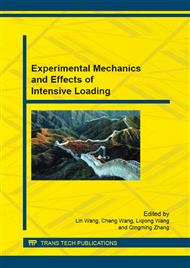p.130
p.137
p.143
p.153
p.158
p.164
p.170
p.177
p.183
Three-Sheet Spot Welds of 5052 Aluminum Alloy: Weld Growth and Failure Behavior
Abstract:
Resistance spot welding is used extensively in auto industry. Every commercial vehicle has 4000-5000 spot welds. The weld ability, performance, and reliability are therefore important issues in design. In this paper, we studied weld nugget formation and failure behavior of three-sheet 5052 aluminum alloy resistance spot welds. The Peltier effect between the Cu-Al (the electrode and the Al worksheet) to the nugget formation was noticed. The mechanical strength and fracture mode of the weld nuggets at the upper and lower interfaces were studied using tensile shear specimen configuration. Three failure modes were identified, namely, interfacial, mixed, and pull-out. The critical welding time and critical nugget diameter corresponding to the transitions of these modes were investigated. Finally, an empirical failure load formula for three-sheet weld similar to two-sheet spot weld was developed.
Info:
Periodical:
Pages:
158-163
Citation:
Online since:
August 2015
Authors:
Price:
Сopyright:
© 2015 Trans Tech Publications Ltd. All Rights Reserved
Share:
Citation:


